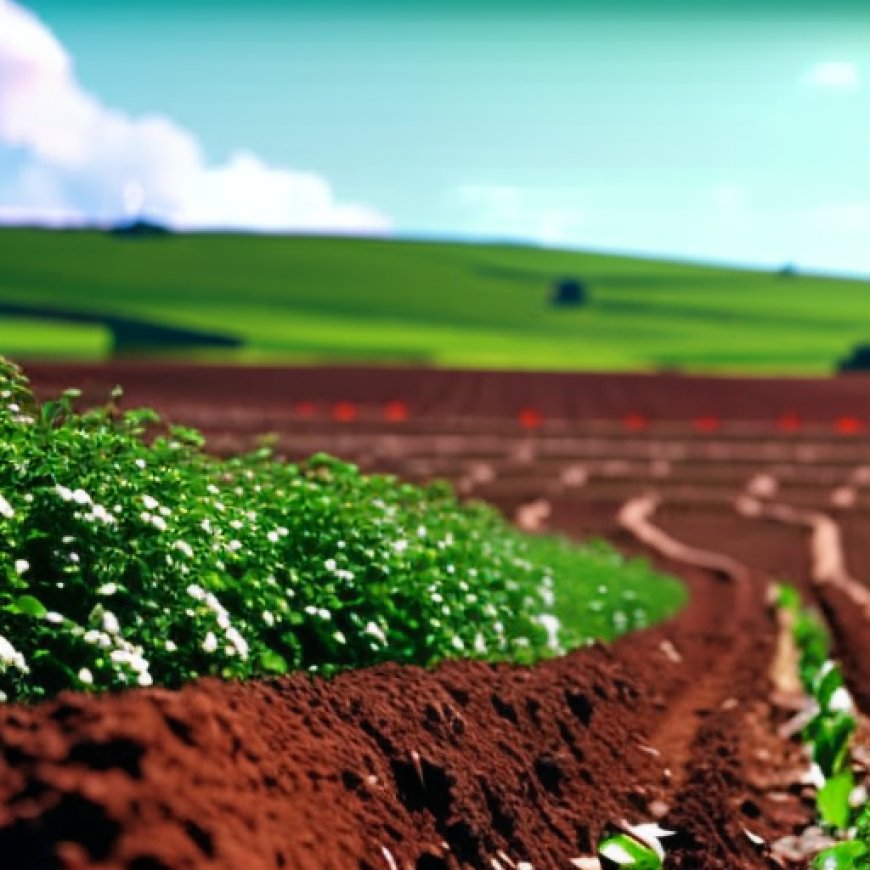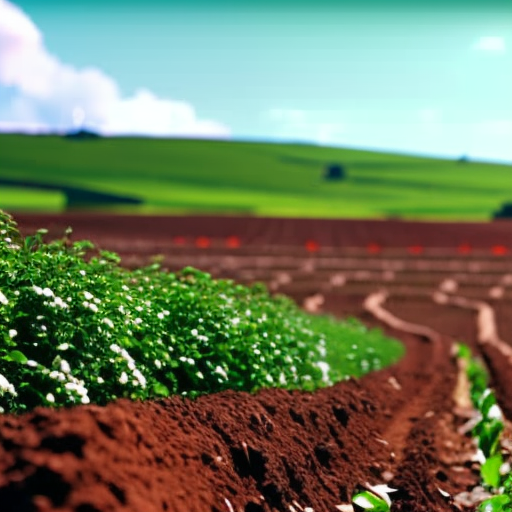Noted soil chemist to talk about climate-resilient agriculture March 26
Noted soil chemist to talk about climate-resilient agriculture March 26 Rural Radio Network


Rattan Lal to Give Lecture on Sustainable Agriculture and Soil Management for Climate and Food Security

MANHATTAN, Kan. – Rattan Lal, a pioneer in soil-centric agricultural management to improve food security globally and a leader in developing climate resilient agriculture, will give the 2024 Roscoe Ellis, Jr. Lecture in Soil Science at Kansas State University on March 26.
About the Lecture
Lal’s talk – Sustainable Agriculture and Soil Management for Climate and Food Security – will begin at 4 p.m. in Regnier Forum of K-State’s Regnier Hall. There is no cost to attend.
Background of Rattan Lal
Lal is currently the Distinguished University Professor of Soil Science at The Ohio State University, and director of that university’s Rattan Lal Center for Carbon Management and Sequestration.
“Dr. Lal’s visit is a unique opportunity for the K-State community to engage with a preeminent expert in soil science, carbon management and sustainable agriculture,” said Nathan Nelson, a soil scientist and professor in K-State’s Department of Agronomy.
Importance of Carbon Sequestration
Carbon sequestration is a natural or artificial process by which carbon dioxide – a colorless and odorless gas – is removed from the atmosphere and held in solid or liquid form.
“The carbon cycle, including carbon sequestration, is an important component in increasing agricultural resilience to future climate change, improving agricultural sustainability and moving toward regenerative agriculture systems,” Nelson said.
He adds: “Understanding how our management (on the farm) impacts carbon cycling and its subsequent effects on the plant nutrient cycle will help us reduce nutrient inputs and losses, and improve the overall nutrient cycling efficiencies in crop production. This will translate to long-term benefits of reduced production costs, greater net returns and cleaner air and water for Kansas.”
Rattan Lal’s Achievements
In addition to his positions at Ohio State, Lal is currently an adjunct professor at the University of Iceland and the Indian Agricultural Research Institute; and a visiting professor at Pontifical Catholic University in Valparaiso, Chile. Among numerous awards, he was the recipient of the 2020 World Food Prize, and the 2019 Japan Prize.
Research Focus
His work in climate resilient agriculture includes soil carbon sequestration, sustainable intensification, enhancing the use and efficiency of agro-ecosystems, sustainable management of soils, and soil health.
His current research focuses on soil carbon dynamics and global warming; soil structure and its management; soil erosion and the fate of carbon transported by erosional processes; soil wetness and anaerobiosis; and sustainable management of soil and water resources.
Impact of the Lecture
Raj Khosla, head of K-State’s Department of Agronomy, called Lal’s lecture “an excellent opportunity for our students, staff, faculty members and the community to engage, listen and learn and be inspired by Dr. Lal and his work.”
About the Roscoe Ellis, Jr. Lectureship
This year’s lecture marks the 39th year of the Roscoe Ellis, Jr. Lectureship in Soil Science at K-State, which was established to advance soil science at the university by attracting prominent scholars to interact with students and faculty.
Roscoe Ellis, Jr. was a prominent K-State faculty member who is remembered for his dedication, knowledge and helpfulness to students and the soil science community.
More information on the lecture series is available online at https://www.agronomy.k-state.edu/about/news-and-events/lectureships/ellis-lectureship/.
SDGs, Targets, and Indicators
-
SDG 2: Zero Hunger
- Target 2.4: By 2030, ensure sustainable food production systems and implement resilient agricultural practices that increase productivity and production, that help maintain ecosystems, that strengthen capacity for adaptation to climate change, extreme weather, drought, flooding, and other disasters, and that progressively improve land and soil quality.
- Indicator 2.4.1: Proportion of agricultural area under productive and sustainable agriculture.
- Indicator 2.4.2: Average income of small-scale food producers, by sex and indigenous status.
-
SDG 13: Climate Action
- Target 13.1: Strengthen resilience and adaptive capacity to climate-related hazards and natural disasters in all countries.
- Target 13.2: Integrate climate change measures into national policies, strategies, and planning.
- Indicator 13.1.1: Number of deaths, missing persons, and directly affected persons attributed to disasters per 100,000 population.
- Indicator 13.2.1: Number of countries that have integrated mitigation, adaptation, impact reduction, and early warning into primary, secondary, and tertiary curricula.
-
SDG 15: Life on Land
- Target 15.3: By 2030, combat desertification, restore degraded land and soil, including land affected by desertification, drought, and floods, and strive to achieve a land degradation-neutral world.
- Indicator 15.3.1: Proportion of land that is degraded over total land area.
- Indicator 15.3.2: Proportion of important sites for terrestrial and freshwater biodiversity that are covered by protected areas, by ecosystem type.
Analysis
The article discusses the lecture by Rattan Lal on sustainable agriculture and soil management for climate and food security. Based on the content of the article, the following SDGs, targets, and indicators can be identified:
1. SDG 2: Zero Hunger
The article highlights the importance of sustainable agriculture and soil management in improving food security globally. This aligns with SDG 2, which aims to end hunger, achieve food security, improve nutrition, and promote sustainable agriculture.
2. SDG 13: Climate Action
The article emphasizes the role of soil-centric agricultural management in developing climate resilient agriculture. This connects to SDG 13, which focuses on taking urgent action to combat climate change and its impacts.
3. SDG 15: Life on Land
The article mentions the importance of understanding how management practices impact carbon cycling and nutrient cycling efficiencies in crop production, which contributes to sustainable land management. This relates to SDG 15, which aims to protect, restore, and promote sustainable use of terrestrial ecosystems, sustainably manage forests, combat desertification, halt and reverse land degradation, and halt biodiversity loss.
Based on the identified SDGs, the following specific targets and indicators can be associated with the article’s content:
1. Target 2.4: By 2030, ensure sustainable food production systems and implement resilient agricultural practices that increase productivity and production, that help maintain ecosystems, that strengthen capacity for adaptation to climate change, extreme weather, drought, flooding, and other disasters, and that progressively improve land and soil quality.
This target aligns with the article’s focus on sustainable agriculture and soil management for climate and food security.
2. Target 13.1: Strengthen resilience and adaptive capacity to climate-related hazards and natural disasters in all countries.
The article highlights the importance of climate resilient agriculture, which contributes to strengthening resilience and adaptive capacity to climate-related hazards.
3. Target 13.2: Integrate climate change measures into national policies, strategies, and planning.
The article emphasizes the need to integrate climate change measures into agricultural management practices to improve resilience and adaptation.
4. Target 15.3: By 2030, combat desertification, restore degraded land and soil, including land affected by desertification, drought, and floods, and strive to achieve a land degradation-neutral world.
The article mentions the importance of sustainable soil management in combating desertification, restoring degraded land and soil, and achieving a land degradation-neutral world.
Based on the identified targets, the following indicators can be used to measure progress towards the targets:
1. Indicator 2.4.1: Proportion of agricultural area under productive and sustainable agriculture.
This indicator can be used to measure the extent to which sustainable agricultural practices are being implemented to improve productivity and production while maintaining ecosystems.
2. Indicator 2.4.2: Average income of small-scale food producers, by sex and indigenous status.
This indicator can be used to assess the economic impact of sustainable agriculture on small-scale food producers, particularly focusing on gender and indigenous status.
3. Indicator 13.1.1: Number of deaths, missing persons, and directly affected persons attributed to disasters per 100,000 population.
This indicator can be used to monitor the impact of climate-related hazards and natural disasters on human lives and well-being.
4. Indicator 13.2.1: Number of countries that have integrated mitigation, adaptation, impact reduction, and early warning into primary, secondary, and tertiary curricula.
This indicator can be used to track the integration of climate change measures into education systems, ensuring that future generations are equipped with the knowledge and skills to address climate change challenges.
5. Indicator 15.3.1: Proportion of land that is degraded over total land area.
This indicator can be used to assess progress in combating land degradation and restoring degraded land and soil.
6. Indicator 15.3.2: Proportion of important sites for terrestrial and freshwater biodiversity that are covered by protected areas, by ecosystem type.
This indicator can be used to monitor the conservation efforts in protecting important sites for biodiversity through the establishment of protected areas.
Table: SDGs, Targets, and Indicators
| SDGs | Targets | Indicators |
|---|








